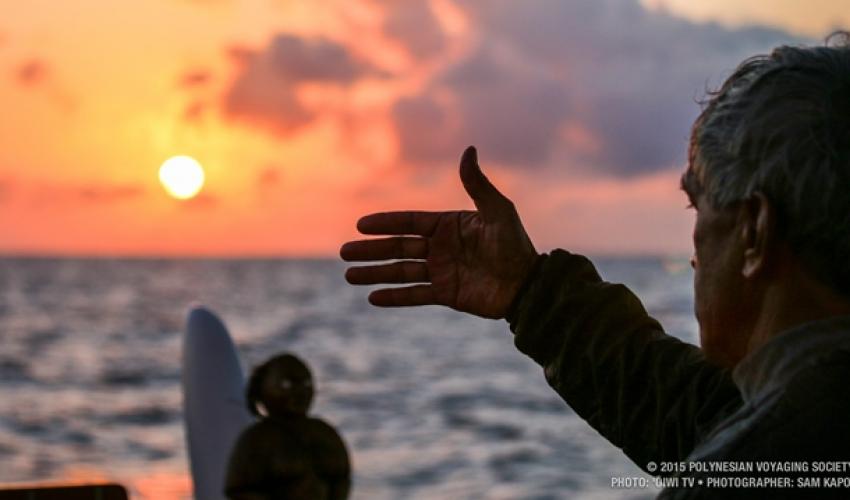“Hōkūleʻa and her crew have been crossing the ocean to show the world that old knowledge can be made new again, and that traditional ecological understanding is key to solving some of today’s greatest problems,” says Nainoa Thompson, President of the Polynesian Voyaging Society.
Hundreds of years before others would dare to sail out of sight of land, the largest expanse of ocean – the Pacific – was explored and settled by Polynesians from the decks of their voyaging canoes. These navigators and voyagers of old turned 10 million square miles of open ocean into a highway connecting the largest country of Island Earth. We – the people of Hawaiʻi today, visitors and natives alike, plant our feet in the same sands as those great explorers, feeling the ocean wrap around our ankles as we watch the sun rise and set into the sea the way they did.
We also witness the loss and degradation of our environment and culture that they never experienced.
Our heritage as wayfinders dates back thousands of years to the greatest feats of exploration in the history of man; but over hundreds of years in our more recent past, the science and art of wayfinding and deep-sea voyaging experienced local extinction. In 1976 Hōkūleʻa became the first deep-sea Polynesian voyaging canoe to be built in more than 600 years, reviving the art and science of celestial navigation and deep-ocean voyaging.
Hōkūleʻa and her crew have been crossing the ocean for over 40 years in the wake of our ancestors, committed to showing the world that old knowledge can be made new again, and that traditional ecological understanding holds the key to solving some of Earth’s greatest problems.
Hōkūleʻa was born out of a place of unrest and controversy for the Hawaiian people and the Pacific, a time when much of the world was beginning to feel the painful realisation that we had set our planet on a course that is unsustainable and destructive to our waters, lands and people. Forty years later, the awakening continues – people all around the world are struggling to find solutions to issues related to safeguarding our ocean and water, our land and air, our people, our history, and our future.
The limits of our land and ocean are clearer than ever before. Taking our cues from nature is more relevant now than we could have ever imagined, and our current Mālama Honua Worldwide Voyage – the voyage to care for our Island Earth – takes Hōkūleʻa around the world to find and share stories of hope for our ocean, Earth and communities. What we’ve discovered after visiting 14 countries and 70 ports across 26,000 nautical miles is that in the face of climate change, ocean pollution, and declining resources, humanity has responded with courage, leadership, vision, and strength.
We are indeed a ‘planet at the crossroads’. The upcoming IUCN World Conservation Congress in Hawaiʻi marks a pivotal point in our collective history when we can come together as natives of this planet to share and learn about the inspiring efforts of communities working to protect our world for future generations.
Living as islanders teaches us that our natural world is a gift with limits and that caring for this gift is critical if we are to overcome the environmental and social challenges we are facing. What is happening to climate, ecology and the chemistry of the ocean is happening to all of us, but there are stories everywhere of action, solutions, hope, and leadership. It gives me great hope that at the IUCN Congress, people from all over the world will come together to create solutions for our Island Earth. All of us can be the sharers of those stories and the messengers of hope.
– Nainoa Thompson, President of the Polynesian Voyaging Society.











